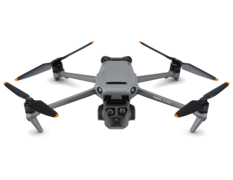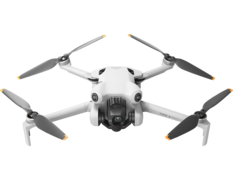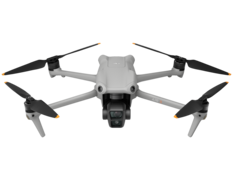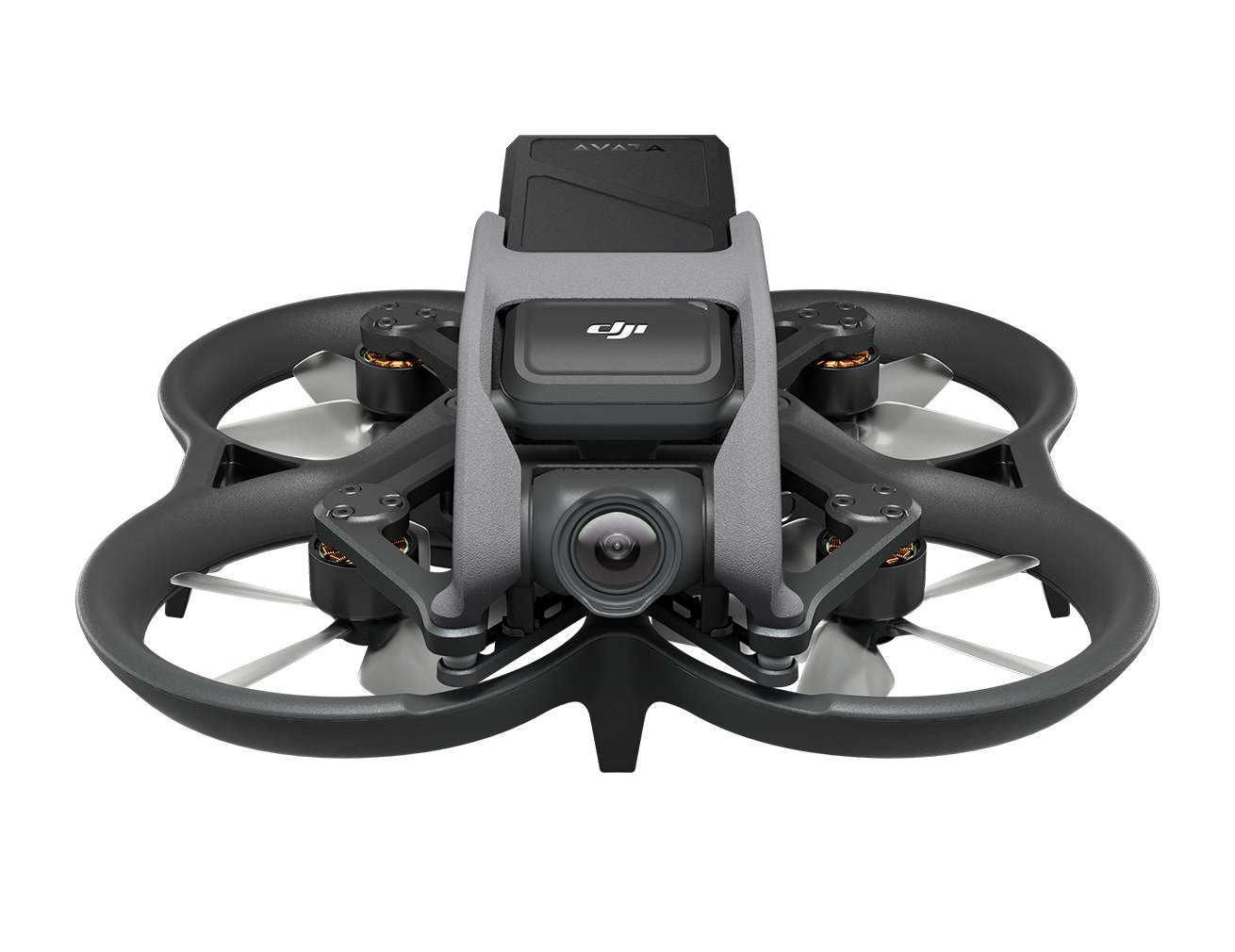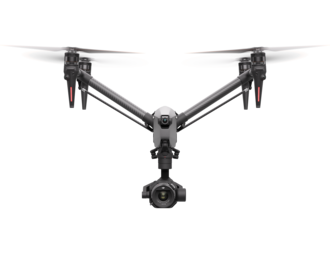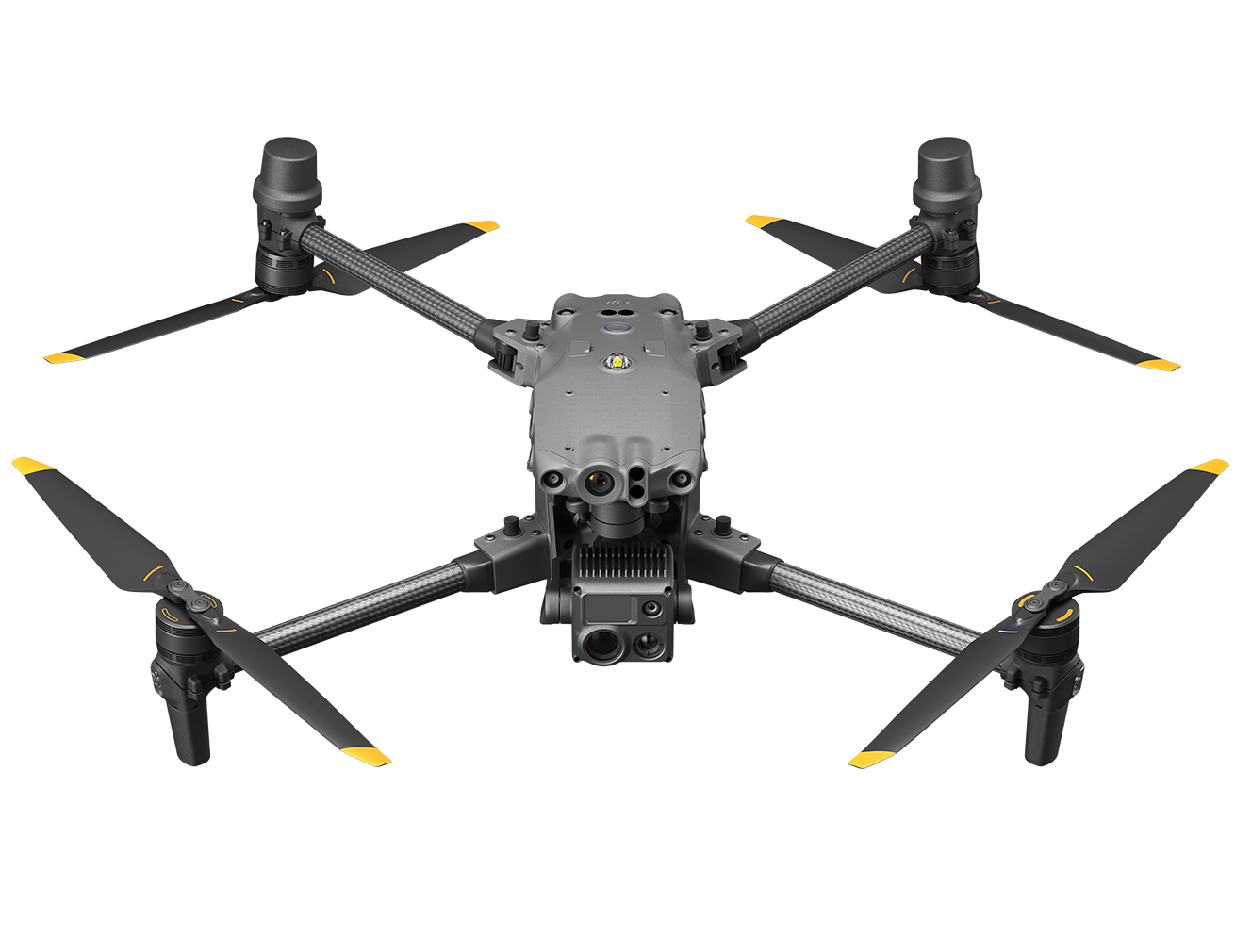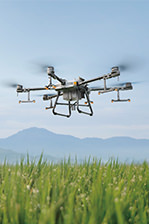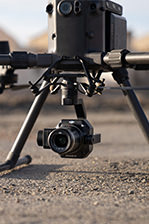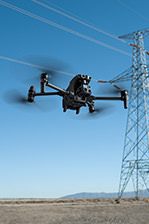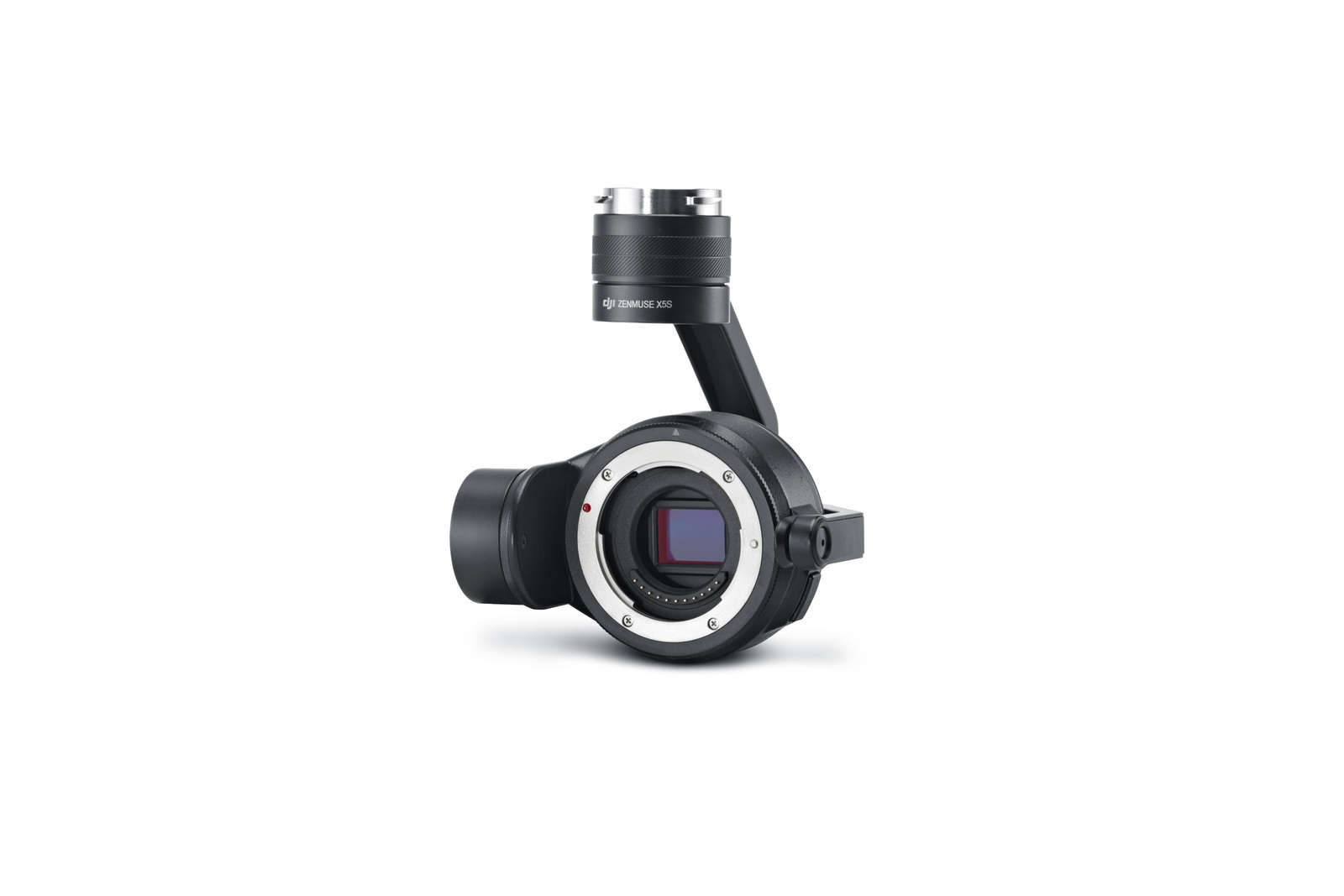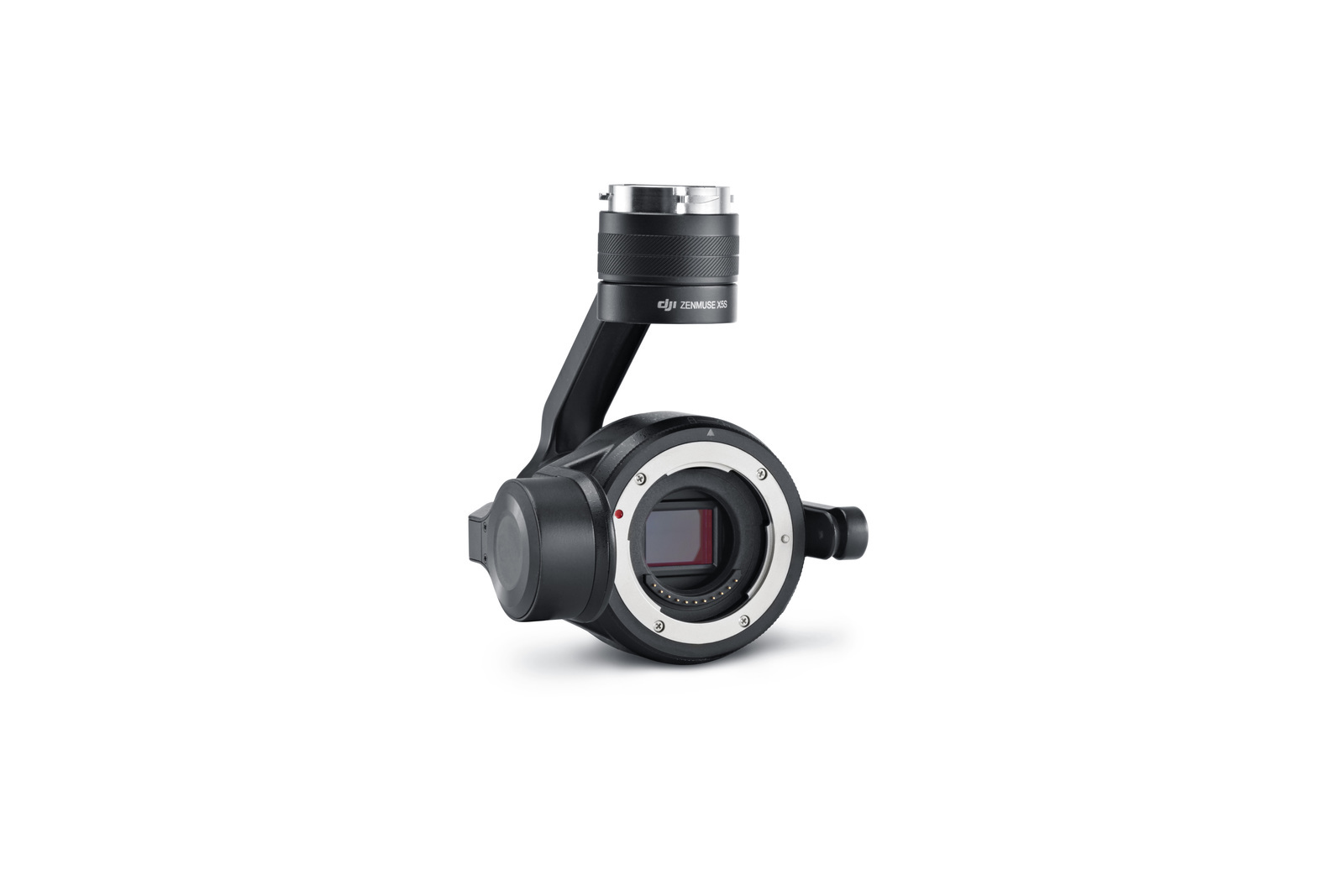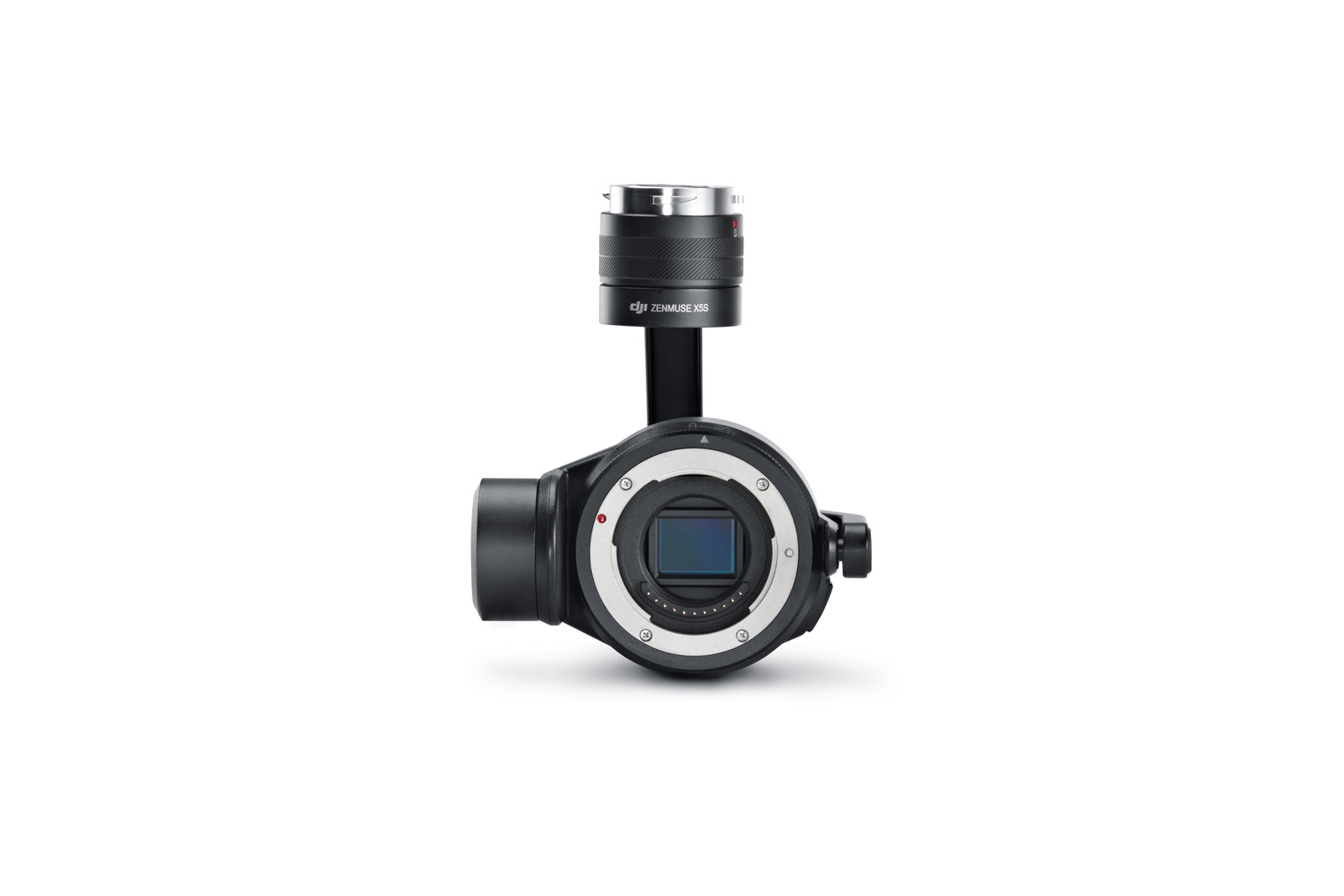DJI Zenmuse X5S (Without Lens)
5.2K video support for high-end professional film making.
Features
The Zenmuse X5S was designed to keep pace with the rigors of high-end professional aerial imaging. Equipped with an uprated Micro 4/3 sensor, the Zenmuse X5S has a dynamic range of 12.8 stops with a much improved signal to noise ratio and colour sensitivity than the X5R. The new CineCore 2.0 image processing system on the Inspire 2makes the Zenmuse X5S capable of capturing 5.2K 30fps CinemaDNG video and Apple ProRes video as well as 4K 60fps using H.264 and 4K 30fps using H.265 (both at 100Mbps). Continuous DNG burst shooting at 20fps with 20.8MP images is also supported.
The onboard Micro 4/3 sensor has been upgraded, significantly improving image quality. With a pixel size of 3.4μm, this 20.8-megapixel sensor captures more detail than the previous sensor. It has 12.8 stops of dynamic range as well as a better signal to noise ratio and color sensitivity than the X5R, allowing it to create clear, low noise images in low light environments.
Due to its Micro 4/3 mount, the Zenmuse X5S supports up to eight standard M4/3 lenses (including zoom lenses) with focal lengths ranging from 9mm-45mm (equivalent to 18mm-90mm on a 35mm camera), allowing more creative flexibility.
Compatible Lenses:
Olympus M.Zuiko 12mm/2.0
DJI MFT 15mm/1.7 ASPH
Olympus M.Zuiko 17mm/1.8
Panasonic Lumix 15mm/1.7
Olympus M.Zuiko 25mm/1.8
Panasonic Lumix 14-42mm/3.5-5.6 HD
Olympus M.Zuiko 45mm/1.8
Olympus M.Zuiko 9-18mm/4.0-5.6
Using CineCore 2.0, the Zenmuse X5S records video at a maximum resolution of 5.2K/30fps in CinemaDNG 12bit*, 5.2K 30fps Apple ProRes 422 HQ and 4K 30fps Apple ProRes 4444 XQ (no alpha)*. Additional recording options include video in 4K/60fps using H.264 or oversampling video in 4K/30fps using H.264/H.265, both with a bitrate of 100Mbps.
* Additional licenses required
Using only the Micro SD card, 20.8MP stills can be captured at 14fps in Burst Mode in JPEG+DNG. Using the DJI CINESSD opens up 20fps continuous DNG Burst Mode with a maximum image resolution of 20.8 megapixels. Stills can also be taken during video recording without interruption.
Stabilizing the Zenmuse X5S is a highly optimized 3-axis gimbal with pinpoint-precise motor rotation with a control accuracy of ±0.01° powered by a dedicated processor. Rather than rely on electrical slip rings (as is common with many gimbals) the Zenmuse X5S uses a unique mechanically limited design and concealed wires to ensure more stable data transmission and greater durability. Vibration is eliminated using three damping balls and a lightweight damping board, creating seamlessly smooth video. 360° rotation remains possible through gimbal rotation and smooth aircraft yaw. Stable, smooth footage1 can be captured even when using a 90mm2 lens.
1 Equivalent to 35mm camera’s standard focal length
2 Exposure time must be equal to or longer than 1/60 in GPS mode
Highlights
M 4/3 Sensor
Shoots 5.2K up to 30 fps, 4K up to 60 fps
20.8 MP still pictures
12.8 Stops, 12-BIT RAW
20 fps pictures in continuous burst mode
Product Specifications
General
Name: Zenmuse X5S
Dimensions: 140 mm x 98 mm x 132 mm
Weight: 461 g (Lens Kit)
Camera
Supported Lens:
DJI MFT 15mm/1.7 ASPH (With Balancing Ring and Lens Hood)
Panasonic Lumix 15mm/1.7 (With Balancing Ring and Lens Hood)
Panasonic Lumix 14-42mm/3.5-5.6 HD
Olympus M.Zuiko 12mm/2.0 (With Balancing Ring)
Olympus M.Zuiko 17mm/1.8 (With Balancing Ring)
Olympus M.Zuiko 25mm/1.8
Olympus M.Zuiko 45mm/1.8
Olympus M.Zuiko 9-18mm/4.0-5.6
Sensor: CMOS, 4/3”
Effective Pixels: 20.8MP
FOV: 72° (with DJI MFT 15mm/1.7 ASPH )
Photo Resolutions:
4:3, 5280×3956
16:9, 5280×2970
Video Resolutions:
Aspect Ratio 17:9
CinemaDNG
4K DCI: 4096×2160 23.976/24/25/29.97p, up to 2.4Gbps; 50/59.94p, up to 4.0Gbps
H.264
4K DCI: 4096×2160 23.976/24/25/29.97/47.95/50/59.94p @100Mbps
H.265
4K DCI: 4096×2160 23.976/24/25/29.97p @100Mbps
Aspect Ratio 16:9
CinemaDNG
4K Ultra HD: 3840×2160 23.976/24/25/29.97p, up to 2.4Gbps; 50/59.94p, up to 4.0Gbps
ProRes
4K Ultra HD: 3840×2160 23.976/24/25/29.97p,
422 HQ @900Mbps; 23.976/24/25/29.97p, 4444 XQ @2.0Gbps
H.264
4K Ultra HD: 3840×2160 23.976/24/25/29.97/47.95/50/59.94p @100Mbps
2.7K: 2720×1530 23.976/24/25/29.97p @80Mbps; 47.95/50/59.94p @100Mbps
FHD: 1920×1080 23.976/24/25/29.97p @60Mbps;
47.95/50/59.94p @80Mbps; 119.88p @100Mbps
H.265
4K Ultra HD: 3840×2160 23.976/24/25/29.97p @100Mbps
2.7K: 2720×1530 23.976/24/25/29.97p @65Mbps;
47.95/50/59.94p @80Mbps
FHD: 1920×1080 23.976/24/25/29.97p @50Mbps;
47.95/50/59.94p @65Mbps; 119.88p @100Mbps
Aspect Ratio 2.44:1
CinemaDNG
5.2K: 5280×2972 23.976/24/25/29.97p, up to 4.2Gbps
ProRes
5.2K: 5280×2160 23.976/24/25/29.97p, 422 HQ @1.3Gbps
H.264/H.265
4K Ultra HD: 3840×1572 23.976/24/25/29.97p @100Mbps
Photo Formats: DNG, JPEG, DNG+JEPG
Video Formats: RAW, ProRes, MOV, MP4
Operation Modes: Capture, Record, Playback
Still Photography Modes: Micro SD: Single shot, Burst Shooting:
3/5/7/10/14 frames, Auto Exposure Bracketing, 3/5 bracketed frames at 0.7EV bias, Timelapse
SSD: RAW Burst Shooting: 3/5/7/10/14/20/∞ frames
Exposure Modes: Auto, Manual, Shutter, Aperture
Exposure Compensation: ±3.0 (1/3 increments)
Metering Mode: Center-weighted metering, Spot metering (area option 12x8)
AE Lock: Supported
Electronic Shutter Speed: 8-1/8000s
White Balance: Auto, Sunny, Cloudy, Incandescent,
Neon Custom: (2000K–10000K)
ISO Range: 100 – 6400 (Video), 100 – 25600 (Stills)
Video Captions: Supported
Anti-Flicker: Auto, 50Hz, 60Hz
PAL/NTSC: Supported
Gimbal
Angular Vibration Range: ±0.01°
Mount: Detachable
Controllable Range Tilt: +30°to -90°, Pan: ±320°
Mechanical Range Tilt: +50°to -140°, Pan: ±330°, Roll: +90° to +30°
Max Controllable Speed Tilt: 90°/s, Pan: 90°/s
Environmental
Operating Temperature: 14°F –104°F (-10°C to 40°C)
Storage Temperature: -4°F –140°F (-20°C to 60°C)
In the box
Zenmuse X5S x 1
Lens Hood x 1
Camera Balancing Ring x 1
Camera Body Cap x 1
Lens Rear Cap x 1
Carrying Case x 1
WHY BUY FROM US?
By buying from Ferntech, you'll have the confidence that you are dealing directly with New Zealand's leading drone experts. Our staff are knowledgable drone pilots who offer expert advice, trusted support and superior specialist service. Only through us will you receive a full New Zealand warranty, phone and email support, and access to our certified Repairs Centre with DJI-qualified drone technicians. And we guarantee that we will have the best prices on the market — if not let us know and we will match any price (conditions apply).
Warranty Details
Zenmuse Gimbals: 12 Months
Gimbal Motors: 6 Months
How is the Zenmuse X5S different from Zenmuse X4S?
While both cameras capture 20 megapixel photos, the X4S features a 1-inch Exmor R CMOS sensor and a fixed prime lens specially designed to fit the sensor and the imaging engine. Additionally, the X4S captures 4K video in the H.264 and H.265 formats. The Zenmuse X5S features a M4/3 sensor and an interchangeable lens mount for M4/3 lenses. Combined with the Inspire 2’s internal CineCore 2.0 image processing system, the Zenmuse X5S can capture video H.264 and H.265 formats as well as CinemaDNG and Apple ProRes and is suitable for a wide range of professional filmmaking and television production applications.
How is the Zenmuse X5S different from the Zenmuse X5R?
The Zenmuse X5R was DJI’s first M4/3 camera dedicated to aerial photography. With a 16-megapixel sensor it is capable of recording 4K/30 in CinemaDNG RAW at an average bitrate of 1.7Gbps. The Zenmuse X5S is a major upgrade over this camera. New features include:
a. A new quick-release connector to connect the Inspire 2 and the Zenmuse X5S. As it has been separated from its image processing system, the camera sensor is protected from magnetic interference and thermal noise.
b. An uprated 20.8-megapixel sensor has a better signal to noise ratio and improved color sensitivity. Working with advanced oversampling technology, it creates clear, low noise images.
c. When used with the CineCore 2.0 image processing system on the Inspire 2, the Zenmuse X5S is able to record 4k/30 oversampling video in both H.264 and H.265 codecs, with a maximum bitrate of 100Mbps. When DJI Inspire 2 License Keys are used and the DJI CINESSD is equipped, the Zenmuse X5S can record 5.2K/30 or 4K/60 video in CinemaDNG, 5.2K/30 in Apple ProRes 422 HQ, and 4K/30 in Apple ProRes 4444 XQ video (no alpha). When shooting at 5.2K, the Zenmuse X5S has a maximum bitrate of 4.2Gbps.
Can I use the Zenmuse X5S separately as a stand-alone camera?
No. The Zenmuse X5S must be used with the Inspire 2. It will be supported on additional products in future.
How is Apple ProRes video recorded by the Zenmuse X5S different from ProRes recorded using the Zenmuse X5R?
The Zenmuse X5R records CinemaDNG video, which then needs processing in DJI CINELIGHT to create Apple ProRes video. Through the new CineCore 2.0 Image Processing System on the Inspire 2, the Zenmuse X5S can directly export Apple ProRes video when using an appropriate DJI Inspire 2 License Key and when equipped with the DJI CINESSD.
What storage devices does the Zenmuse X5S support?
Micro SD card and DJI CINESSD. A Micro SD card is required for image capture, while the CINESSD is necessary only for high-end productions requiring specific video formats.
How are the X5S camera, Inspire 2, DJI Inspire 2 License Key and CINESSD related?
The Zenmuse X5S is a professional aerial camera that is compatible with the Inspire 2. Videos recorded by the Zenmuse X5S are processed by the CineCore 2.0 Image Processing System. A DJI Inspire 2 License Key unlocks CinemaDNG and/or Apple ProRes processing capabilities in CineCore 2.0. These files are then saved in the CINESSD. Video quality is dependent on whether the 120G CINESSD or 480G CINESSD is used.
Where are Zenmuse X5S images stored?
JPEG and DNG pictures (not including RAW images captured in Burst Mode) and videos recorded in H.264 and H.265 codecs are saved to the Micro SD card, while RAW images captured in Burst Mode are stored in the DJI CINESSD. After unlocking using a DJI Inspire 2 License Key, CinemaDNG and Apple ProRes videos will be saved in the DJI CINESSD.
How does the Zenmuse X5S record CinemaDNG and Apple ProRes video?
CinemaDNG and Apple ProRes videos are only available when these formats are unlocked using a DJI Inspire 2 License Key and the Zenmuse X5S is used with a DJI CINESSD. Video quality is dependent on whether the 120G CINESSD or 480G CINESSD is used. The Zenmuse X5S can also generate H.264 or H.265 video while recording in CinemaDNG or Apple ProRes.
How is the H.265 codec superior to H.264?
H.265 is the new video compression standard that follows H.264. H.265 has 50% more information, better compression performance and a lower bandwidth utilization ratio. Please be aware that you will need an upgraded device to play or decode H.265 video.
What will the focal length of lenses be when used with the Zenmuse X5S?
Equivalent focal length will be approximately double the lens’ actual focal length.
There's currently no reviews for this product, be the first to write one.


